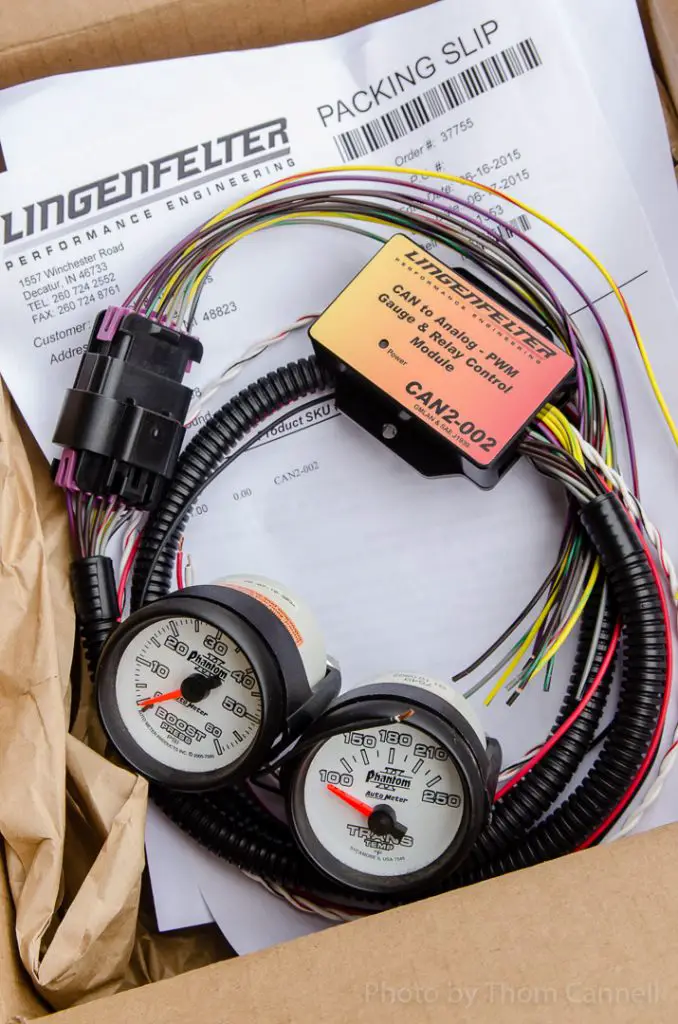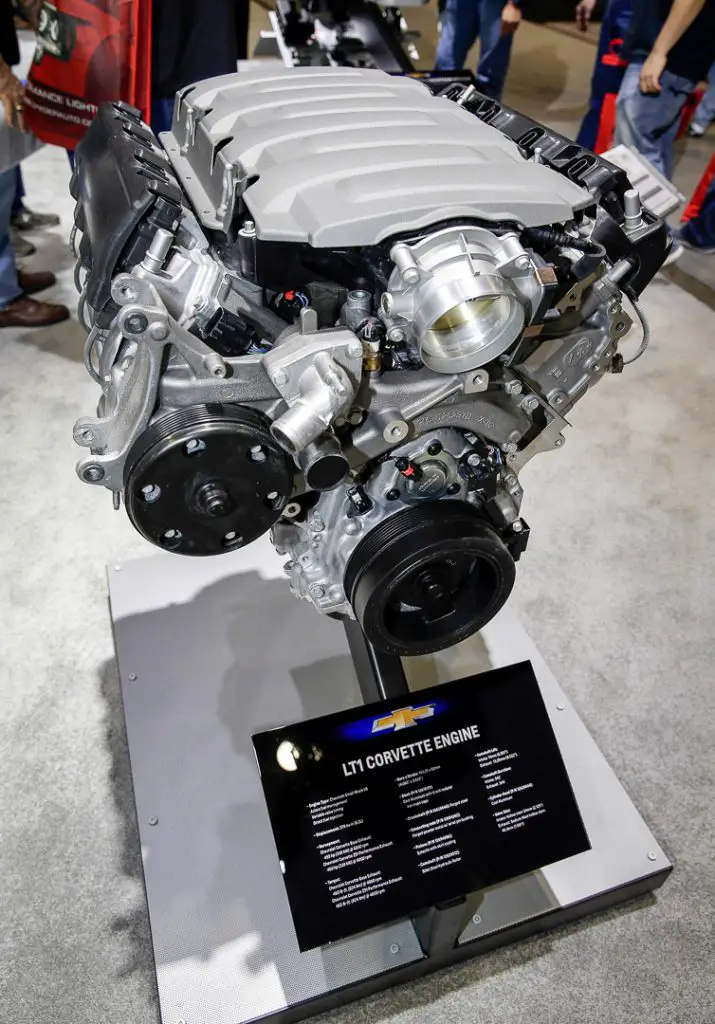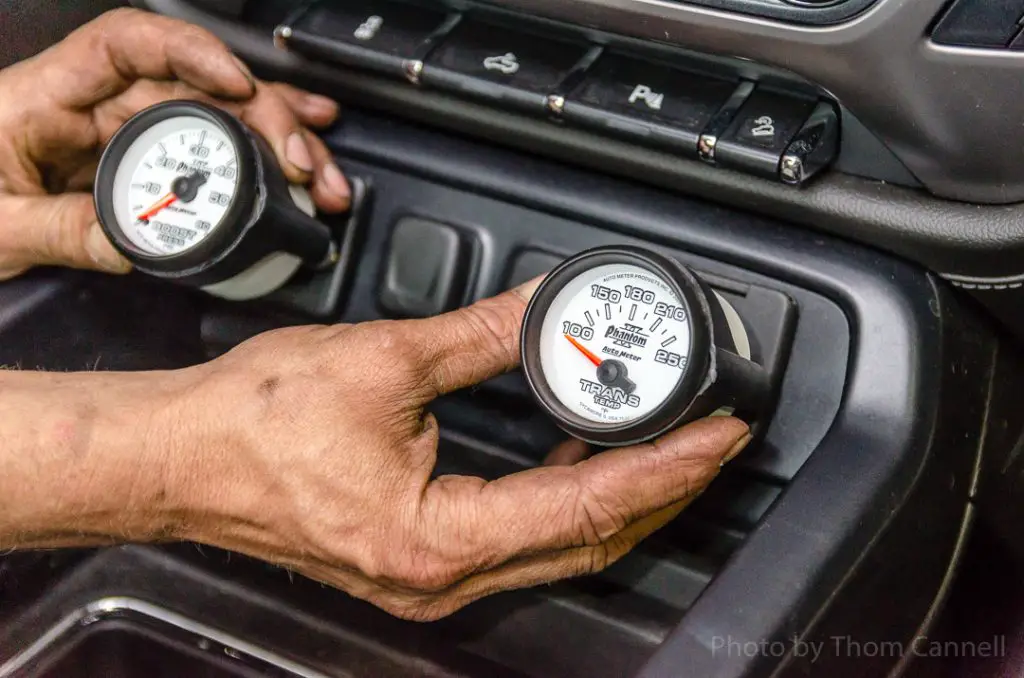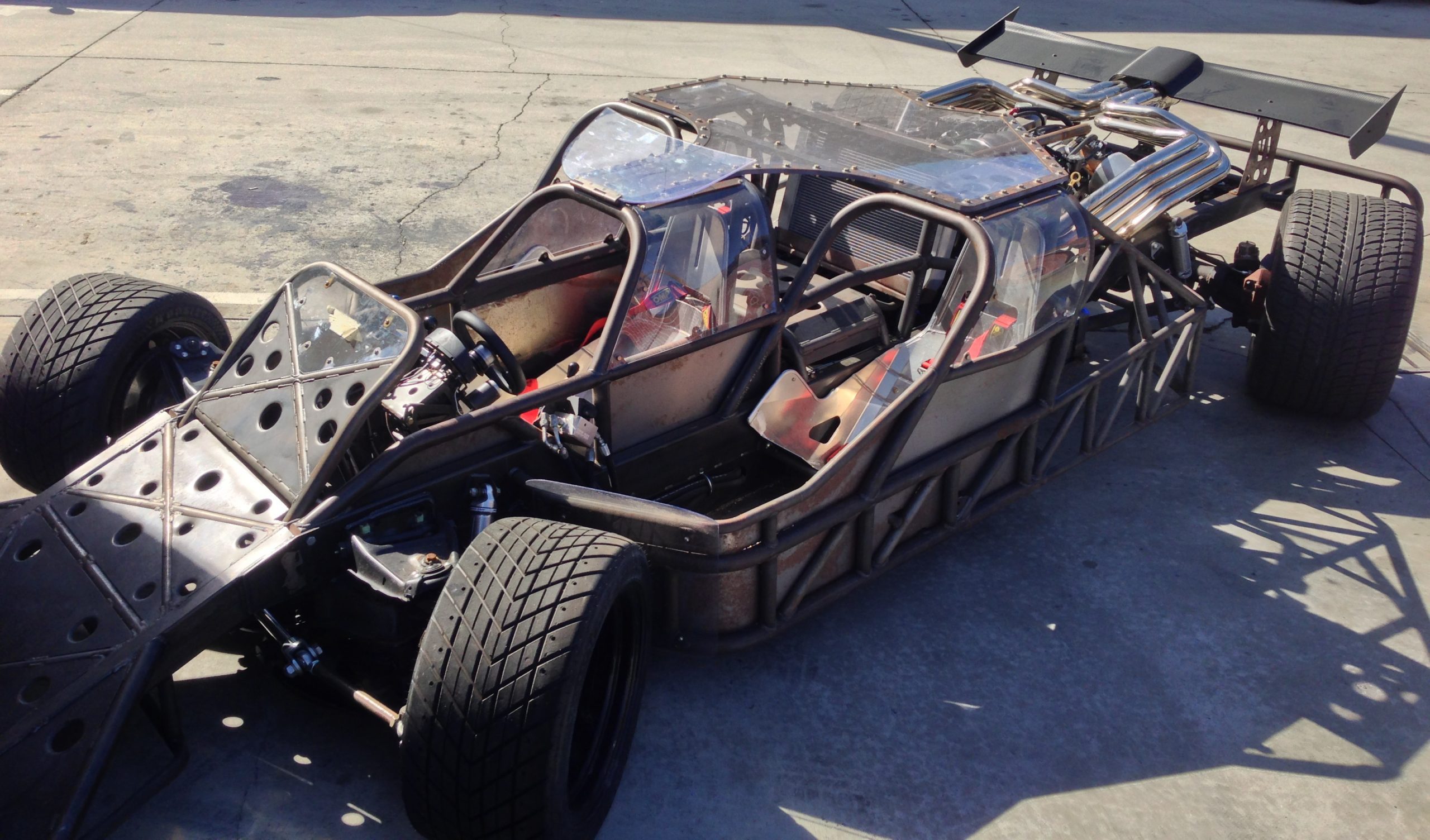Do you have a vehicle project that “only” needs an LS engine swap to make it perfect? Maybe you’ve always been wondering just how you’d make that work? Turns out Lingenfelter has a simple tool that can make your LS engine swap a reality.
Everybody has a dream truck, one that’s made up of a favorite engine, a heart-stopping body style—old and rich with patina or a metal fabricator’s amazing creation. What’s often lacking is a modern driveable, smog legal motor. That’s where a GM LS engine could drop right in, but not necessarily in the ways you’d want. For instance, what about making your favorite gauges work? As it turns out, that’s exactly the role of Lingenfelter Performance Engineering’s CAN2-002.
LS Engine Swap Made Easy
This “black box” (it’s tan actually) exists for a reason directly related to modern microprocessor-controlled engines. They only output digital data, which makes it impossible for you to use any analog gauges whether tachometer, oil pressure, voltage, water temperature, or boost. Otherwise known as the type of gauges every classic or custom vehicle uses.

Senders or sensors, the original analog kind, only existed to output something to a gauge, oil pressure for instance. They were originally direct reading gauges; for example, oil pressed against a diaphragm in the gauge itself. Later, sensors created an electric signal proportional to pressure, temperature, or rotation that was output to a gauge on the dash. But until then, a tach hooked to a distributor’s points; the speedometer cabled directly to the transmission. Simple and effective.
Today, for a direct-injected engine to run, microprocessors are necessary. The Engine Control Unit (ECU) needs to know internal pressures, temperatures, and rotational motion, often at multiple points in the engine or cooling system. So, the necessary sensors exist, but that information goes to the ECU and you can’t piggyback that information by hooking other wires to the sensor.
To get the signals you need, assuming you’re not happy with factory gauges or are dropping an LS or LT into your truck and don’t have digital gauges, Option A is to drill holes into the block and tap or weld bungs into the engine. Then you’d attach analog sensors, duplicating existing digital sensors which you must keep. This is never easy, nor a really good solution.

Option B, because the ECU monitors and communicates all the sensors’ data (ABS, body computer, transmission) over a CAN link, the data is available. The high speed CAN1 bus offers the good stuff, engine, ABS, and transmission. A low-speed CAN bus shares other information like power windows and seats, door locks, lighting, wipers, anything that’s not critical to the engine and emissions.
Combining Analog and Digital Signals
But how do you marry the two worlds of analog and digital? Lingenfelter Performance Engineering’s CAN2-002 box takes any message on the high-speed bus—oil pressure, intake air temperature, water temperature—and outputs up to four selected analog signals.
Once installed, you may hook any kind or brand of gauge, making your truck look the way you dreamed of. All modern trucks have an ALDL (Assembly Line Diagnostic Link) connector for diagnosis; the data is there. Connect power and ground, and that data link, and you’re ready to rock. In the spirit of customization, Lingenfelter configures modules to your specific needs.

You just call, order, tell them what gauges and data you want, and the engine you’re swapping into your project, and they customize the software precisely for you. As it turns out, the product is not a one-size-fits-all. And that’s perfectly fine when the combination of engines and projects are nearly unlimited. You get a black box programmed directly for you and your custom vehicle LS engine swap.
Development for the device began in 2010 when a gauge manufacturer came to Lingenfelter to release a better gauge package for the 2010 Camaro, replacing the GM package. The original device could only output four signals: oil temperature, oil pressure, transmission temperature, and voltage. Lingenfelter later developed devices with greater capacity.
“It’s just software,” Mark Rapson, COO/VP Operations explained. “You write software to accept one message and output another message. We continued to develop capacity and ability. In a Camaro you’re never going need a speedo or tach, which you’re unlikely to replace.” But for a custom truck, that may not be true, you’ll need both of those, plus whatever other gauges you think are necessary and way cool looking. Like fuel gauges, oil and water temperature, and more, so you can attach more than one CAN2-002.
“It seems like every kind of vehicle has an LS swapped into it, it’s the number one swap engine,” Mark continued. “It continues to grow exponentially. Even if you go to a junk yard and buy a 5.3-liter for $500, you’re either going to drill a bunch of holes into the engine and weld bungs to the oil pan to get the readings, or you’re going to run our box.” If you’ve built engines you know how hard it is to get all the swarf and shavings out of it, let alone if you’re drilling into an existing engine. At $289, the CAN2-002 makes good sense, particularly when you’d like to retain the original factory analog gauges in an older vehicle.
LS Engine Swap For Any Vehicle – Lots of Engines
Capabilities? While it’s simple, for what it does and how it does it, its capabilities are impressive and extensive. Each will run up to four gauges of your choice and each box is specific. But let’s say you’re not a GM fan. The box follows SAE J1939 and GMLAN protocols for communications and your chosen engine might communicate on J1939. The box also can control relays for low-pressure lights, cooling fans, even complex events like turning on the fan when the engine temperature is over 190°F and speed is below 50 mph. “Any information that’s on that CAN bus you can configure,” Mark concluded.
For more information, visit www.lingenfelter.com, contact Lingenfelter Performance Engineering at 7819 Lochlin Drive, Brighton, Mich., or call 260.724.2552.
Read more stories from the GM-Trucks.com Garage

